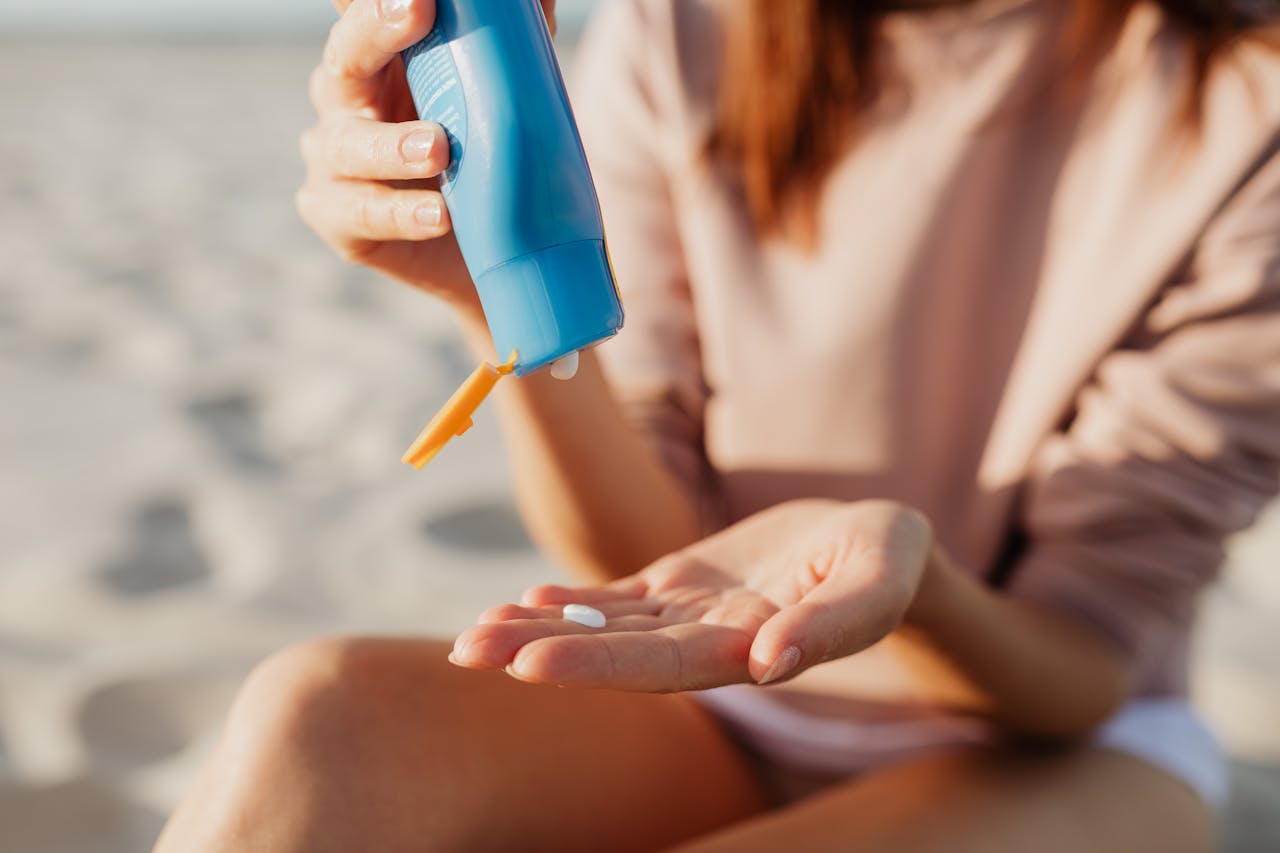As soon as the sun peeks out, we start rummaging through last summer’s stash of sun protection. But should you be reaching for sun cream or tanning oil? While both promise to enhance your time in the sun, they serve very different purposes — and the wrong choice could mean more than just a bad tan line.
In this guide, we’re breaking down the difference between sun cream and oil, looking at their benefits, risks, and which one your skin truly needs.
What’s the Difference?
At first glance, both products come in beach-ready bottles and smell of summer. But they’re formulated for different goals:
- Sun Cream is designed to protect your skin from ultraviolet (UV) radiation. It contains UV filters (either chemical or mineral) that absorb or block harmful rays, helping to prevent sunburn, premature ageing, and skin cancer.
- Sun Oil, on the other hand, is typically made to enhance tanning. Some oils contain SPF, but many do not. Instead of protecting, oil can actually intensify UV exposure by making your skin more susceptible to the sun’s rays.
SPF: The Key Metric
The Sun Protection Factor (SPF) rating on products tells you how well they protect against UVB rays, which cause sunburn.
- SPF 15 blocks about 93% of UVB rays
- SPF 30 blocks around 97%
- SPF 50 blocks up to 98%
Most dermatologists recommend a minimum of SPF 30 for daily use, and higher if you’re spending time outdoors or on holiday.
The problem with many tanning oils? They offer low SPF (often SPF 2 to 15) — if any at all. This might accelerate tanning, but it also massively increases your risk of skin damage.

Sun Cream vs Tanning Oil
Is Tanning Oil Ever Safe?
If you’re dead set on a golden glow, there are safer ways to tan than basking in baby oil like it’s 2001.
Some modern tanning oils do contain SPF — usually between 15 and 30 — and additional ingredients like vitamin E, jojoba, or coconut oil to moisturise skin. If you choose an oil, make sure:
- It clearly states an SPF of at least 15 (ideally 30+)
- You reapply regularly (especially after swimming or sweating)
- You never use it as a substitute for sun protection on high UV days
But for fair-skinned people, children, or anyone at higher risk of sunburn or skin cancer, dermatologists strongly advise avoiding sun oils altogether.
The Case for Sun Cream
Sun creams have come a long way from the sticky, chalky formulas of the past. Now you can find lightweight, non-greasy options for every skin type — from gel-based fluids to rich moisturisers that double as face creams.
Benefits of Sun Cream:
- Protects against both UVA and UVB rays
- Reduces risk of skin cancer
- Prevents premature ageing (wrinkles, age spots, loss of elasticity)
- Suitable for all skin tones (yes, even darker skin can burn and suffer UV damage)
- Available in water-resistant formulas, ideal for swimming or sweating
Some sun creams even include antioxidants, anti-ageing ingredients, or tinted finishes that work as part of your beauty routine.
Common Myths
Let’s clear up a few misconceptions:
- “Tanning oils are more natural.”
Not always. Many contain synthetic fragrances and little to no sun protection. - “Darker skin doesn’t need sunscreen.”
Melanin provides some protection, but not enough. Skin cancer in darker skin tones is often diagnosed later — making sunscreen essential. - “You can’t tan with sun cream.”
You absolutely can. Sun cream doesn’t block 100% of UV rays — it just reduces the harmful ones. You’ll still tan gradually, and more safely.
Sun Cream vs Oil: Which Should You Choose?
| Feature | Sun Cream | Sun Oil |
|---|---|---|
| Main Purpose | Protect skin from UV damage | Enhance tanning |
| SPF | Usually 30–50 | Usually low or none |
| UVA/UVB Protection | Yes | Rarely, unless stated |
| Best For | Daily use, all skin types | Occasional use on already-tanned skin |
| Risks | Minimal when used properly | High risk of burns, ageing, cancer |
Final Verdict
If you want to look after your skin — not just this summer but in the years to come — sun cream is the clear winner. It helps you enjoy the sun responsibly while still getting a healthy glow over time. Oils might promise fast tanning, but they often come with a cost to your skin’s long-term health.
That doesn’t mean you have to give up the idea of bronzed skin. Look for gradual tanning lotions, or better yet, self-tanning products that give you that beachy look without any UV damage at all.
Your skin is your biggest organ — treat it with care.
Bonus Tips for Summer Skin Safety
- Reapply sun cream every 2 hours, or immediately after swimming or sweating
- Don’t forget easily missed spots: ears, tops of feet, and the back of your neck
- Wear a wide-brimmed hat and sunglasses when out in the sun
- Check the UV index each day and avoid peak hours (11am–3pm)


